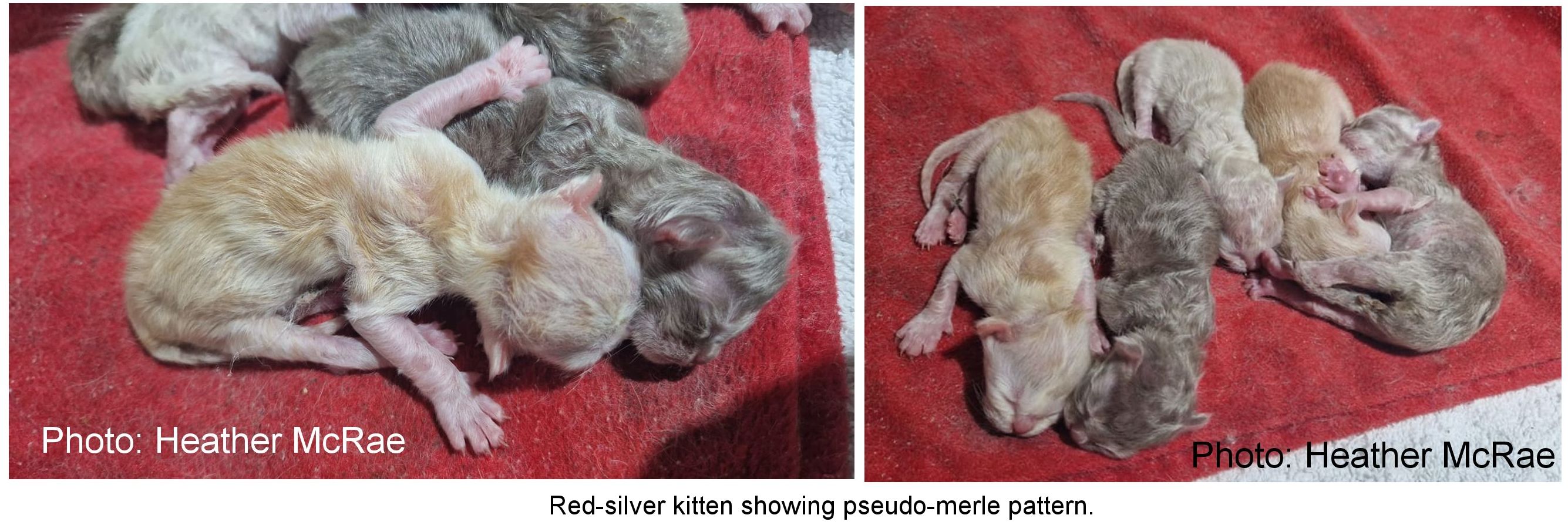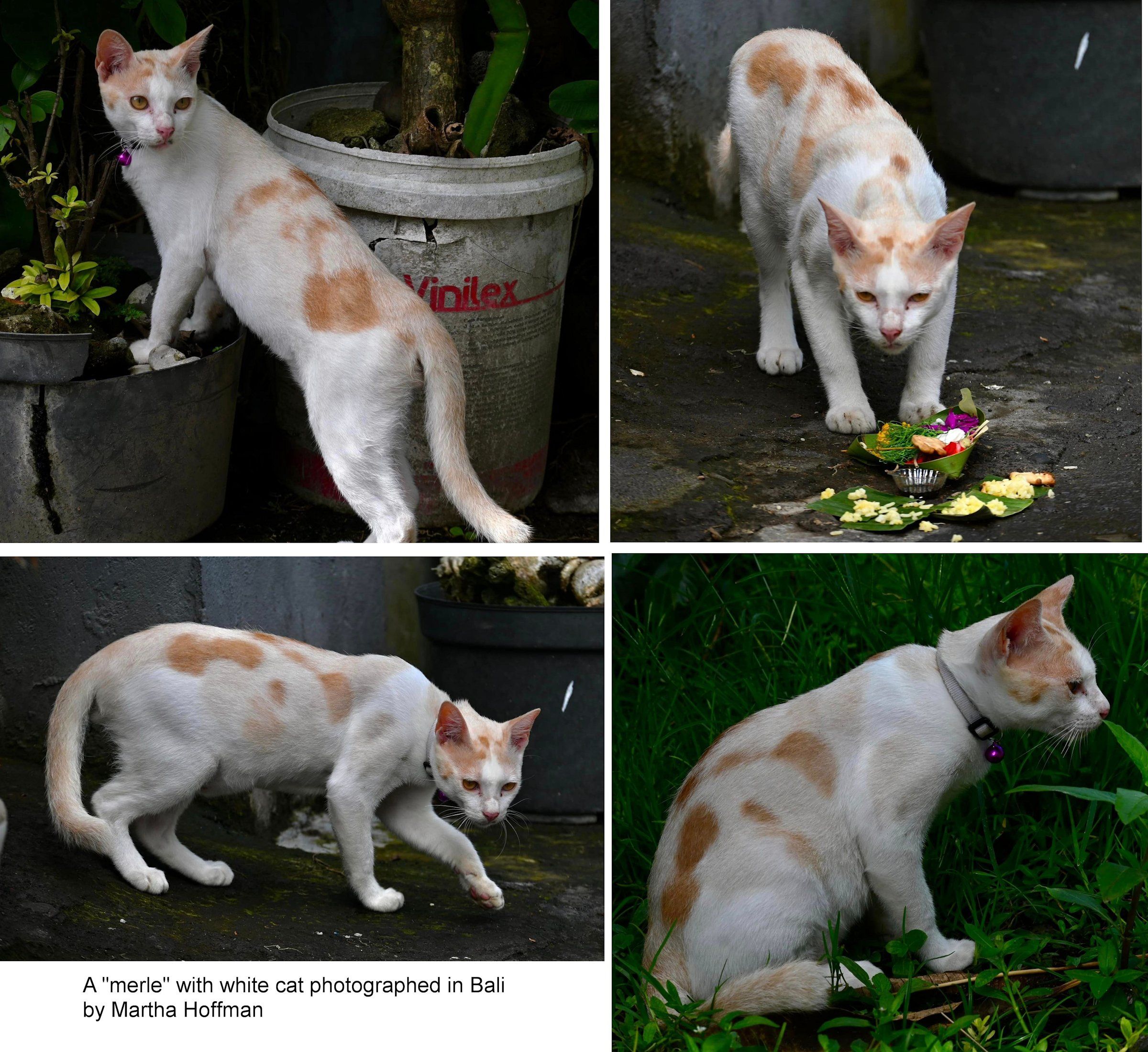
PSEUDO-MERLE (RED-SILVER DAPPLE, BLACK-SILVER DAPPLE) CATS
The terms "pseudo-merle" or "merle effect" are only used here because there is no current term for this phenomenon in cats. I've used the terms descriptively, not genetically. I've used these terms to refer to non-dilute patches on a dilute colour, or to non-silver patches on a smoke, tipped/chinchilla or shaded silver cat.
True merle is a pattern in a dog's coat where a dilute or roan colour is patched with the corresponding dense colour e.g. black patches on blue/grey, red/brown patches on red roan. The canine merle gene also causes blue eye pigment. In dogs, it's a dominant mutation and homozygous merles - homozygous recessives -, if they survive, are white-coated and may have eye defects and deafness. This is not the case in the cats displaying this pattern

This "black pseudo-merle" cat bred by Sofie Bergensjö is a purebred Maine Coon female, Bergensjö's Port Ellen, (Lovin'You4ever Merlin x Big Lynx's Aslaug) a black tortie silver shaded with a pseudo-merle pattern. It looks like the silver gene or the wideband gene isn't working in some of the black areas. (Photos received Feb 2024)
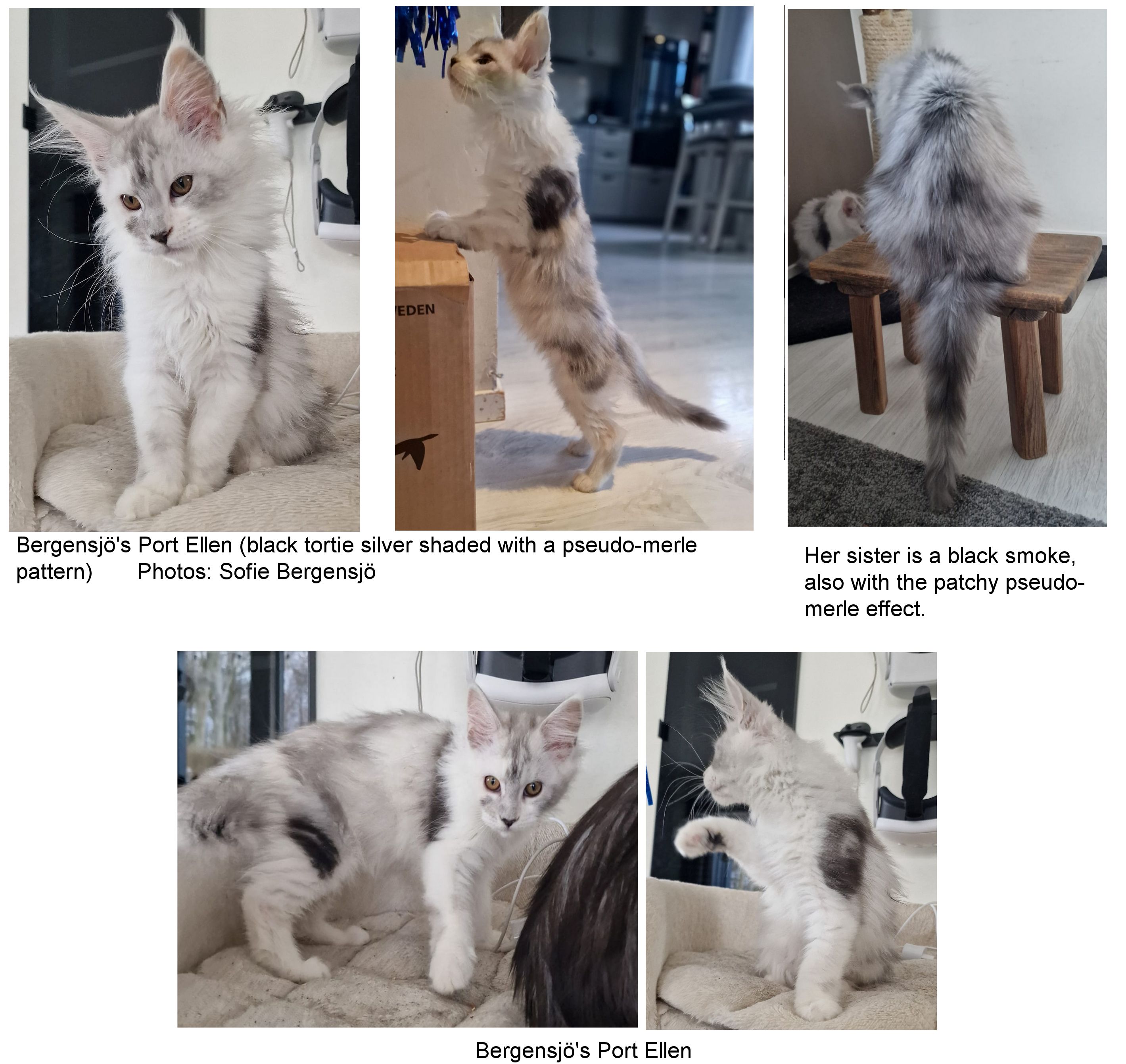
Visual Effect
In cats, there is no clearly identified gene and the effect it appears to be cosmetic only. Observation finds it to occur in smoke, tipped and shaded silver cats where some patches lack the silver undercoat. It appears to be most common on red-silver (chinchilla or shaded silver) cats that have non-silvered patches. It can occur in any breed, for example Janet Poulsen had a red-silver Norwegian Forest Cat with solid red patches. This cat's grandson, Watzi, had a mix of red-silver areas and some non-silver (red-tabby) areas which made him look like a tabby-tortie cat. Watzi had two significantly large areas on his back where the coat was red all the way to the skin. His father was a very pale red silver that looked cream, but was not genetically dilute. Watzi's grandson, Buster, is a black silver mackerel tabby with white. He has patches of brown black.
Eleonora Ruggiero is aware of some unusual shaded silver and smoke Maine Coons in Italy that have a merle effect which may be a new mutation (2023). The breeders of these cats are not interested in researching new mutations. I was asked to look at a black merle-like female Maine Coon from the USA, but found it was a tortoiseshell silver, the red/cream areas being bleached almost to white by the silver (inhibitor) gene. In the case of the tortoiseshell silver, the clues were the small red/cream patches on the legs.
In 2009, on a mailing list, Bobbie Tullo reported some "red merle" (her term) cats that were red silver, with or without white, and had solid patches of red amongst the red silver part of the pattern. They had copper, gold or occasionally and green eyes and she had observed them most often in Maine Coons and in a few household pets.

Below is an Oriental Shorthair, genetically a chestnut silver spotted tabby and white, but with with non-silver patches resulting in the "merle effect". Kotchera Trail Blazer of San-Toi was bred by Wendy Heidt, a Siberian breeder and is being investigated by Pat Decano (CasaDecano Orientals, Siamese and Colorpoint Shorthairs). Pat has also considered chimerism as a possible explanation.
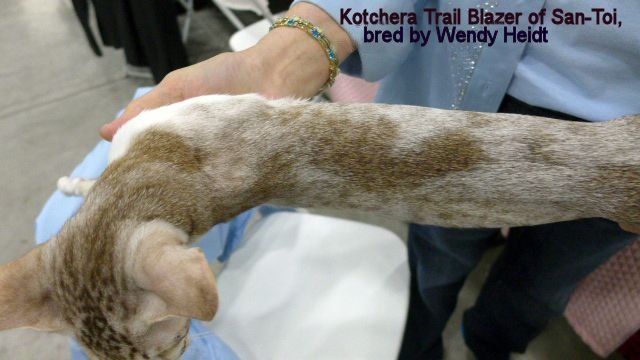
Lesley Morgan provided photos of a South African Exotic Shorthair (registered as fs 09 = black smoke with white), below. Her black areas are definitely smoke, not solid. She was owned by Kaai Du Pleases and his partner, Dirk. Janet Poulsen's Watzi is also shown below.
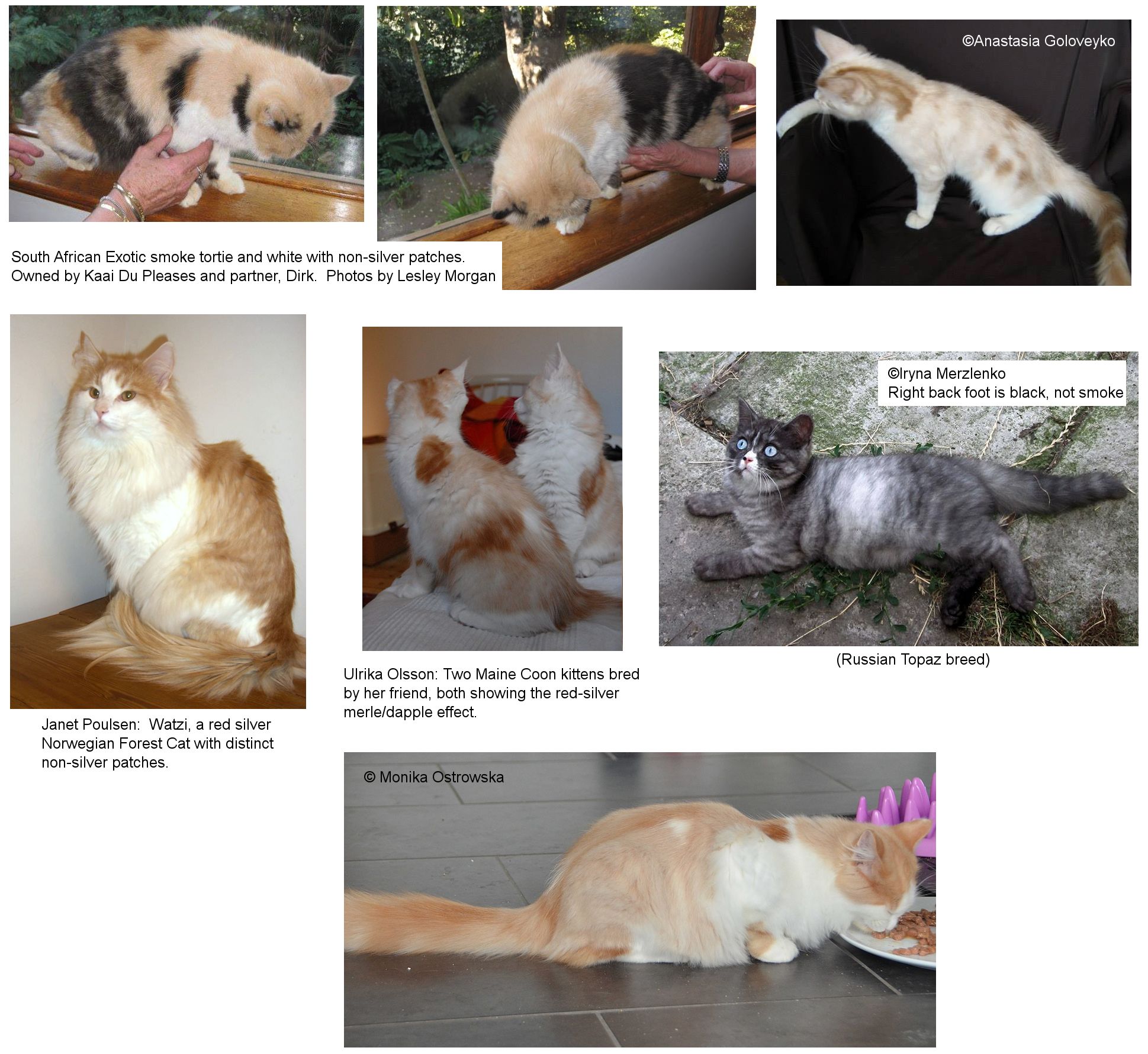
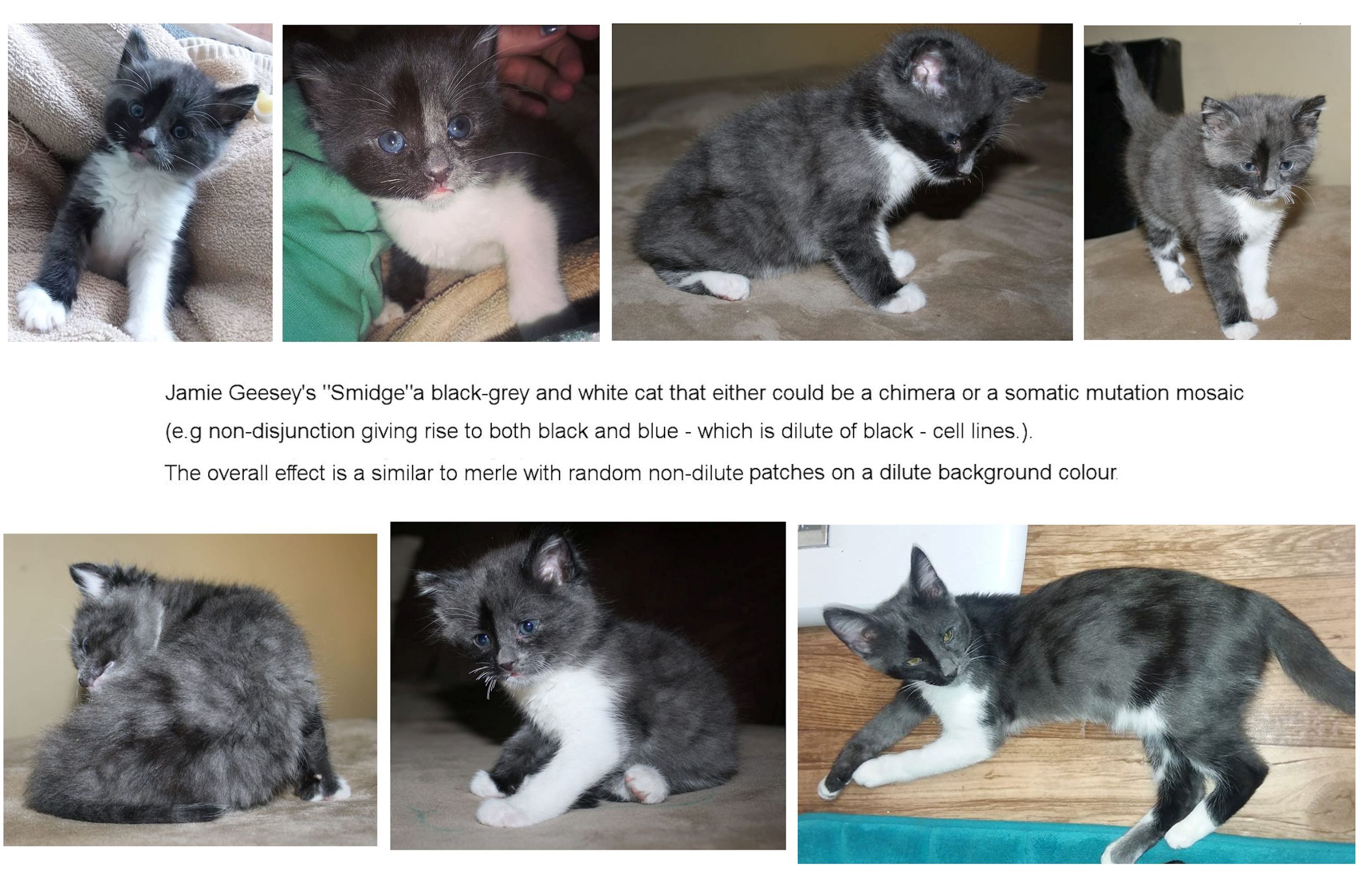
Sheila Newenham provided this photo (2025) of an adolescent male cat that is black and white cat with patches of blue (grey). Since two somatic/non-disjunction mutations in different unconnected areas (neck and thigh) seem unlikely, he is probably a chimera.
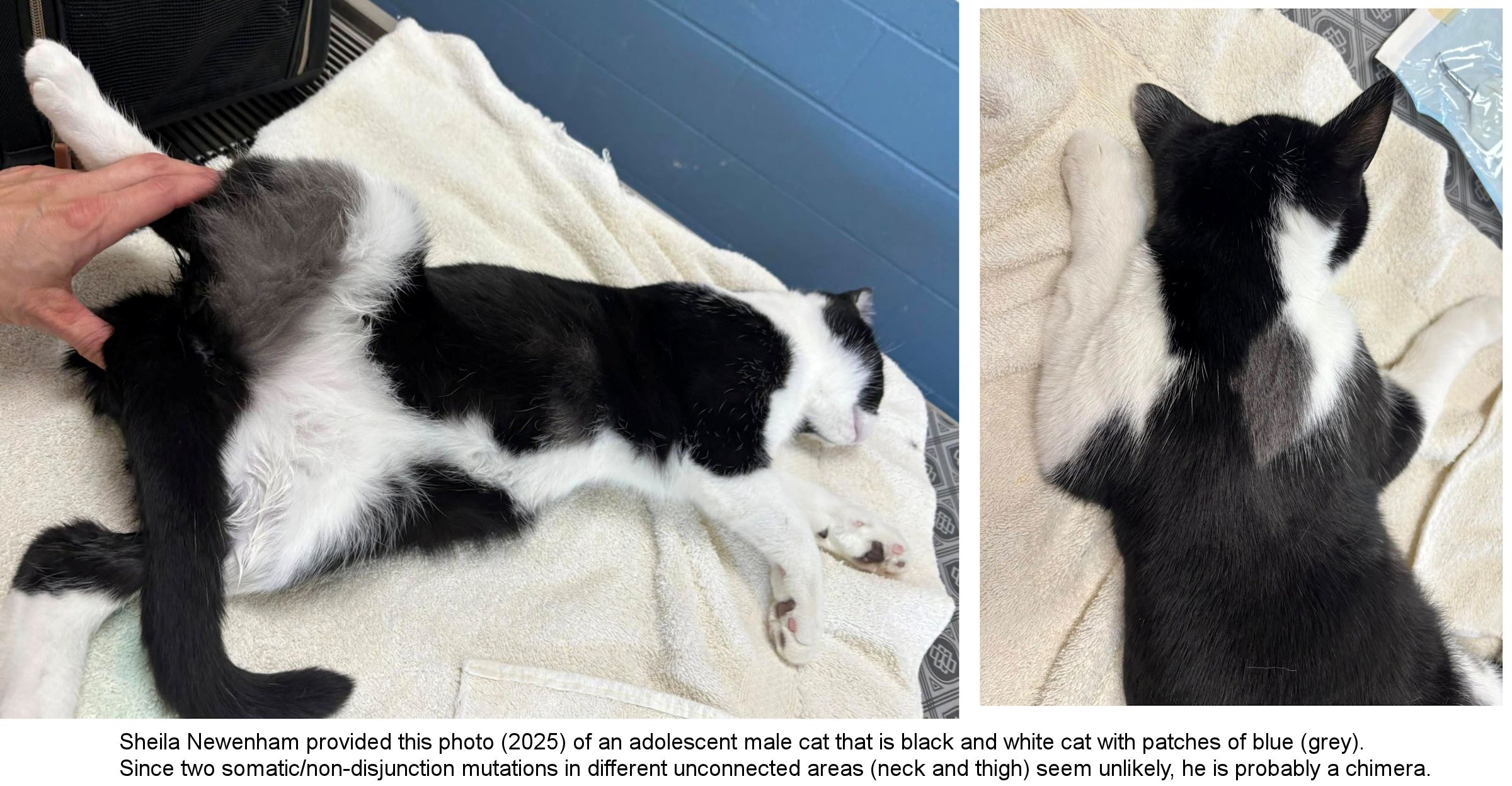
This pattern of black and blue (and that of Japanese cat Panda in the 1980s) also fits the description of merle – dilute and non dilute at the same time.
 |
 |
In Japan in the 1980s, there was an instance of a beautiful blue-black-white fertile male (Panda) documented by zoologist Jeremy Angel. Panda was probably an XY/XY chimera (2 fused male embryos) as he had a mixture of dilute (grey) and non-dilute (black) in his coat. His father was a solid blue cat (Mo) and his mother was Aya (tabby-and-white). The colony into which he was born was inbred with more then 70% of the cats carrying Mo's genes.
The blue parts of Panda's body seem to have a higher degree of white than the black parts. Panda had normal male behaviour and was very fertile. He would have bred as either a black or a blue (grey) cat depending on which embryo's cells hade formed his testicular tissue. The diagram, based on a number of photographs, gives some idea of his mosaicism. This mix of dilute and non-dilute also fits the description of merle pattern.
A pseudo-merle is found in the Topaz breed bred by Iryna Merzlenko (Cattery Nikita'l, Ukraine). These blue/black merle-pattern cats all have the silver gene and cannot all be chimeras due to their frequency. Although they look like a mix of smoke and solid colour, the different colours are due to the silver (inhibitor) gene working unequally in different parts of the coat giving darker and paler areas, but all with silver close to the skin. It appears to be linked to the blue-eye mutation and has occurred in a number of cats (and these are genetically related to the famous blue-eyed "Narnia" with his blue-and-black face, albeit not having the silver gene). Merle colour has been found in every litter with smoke kittens, and is often located on the belly or legs.
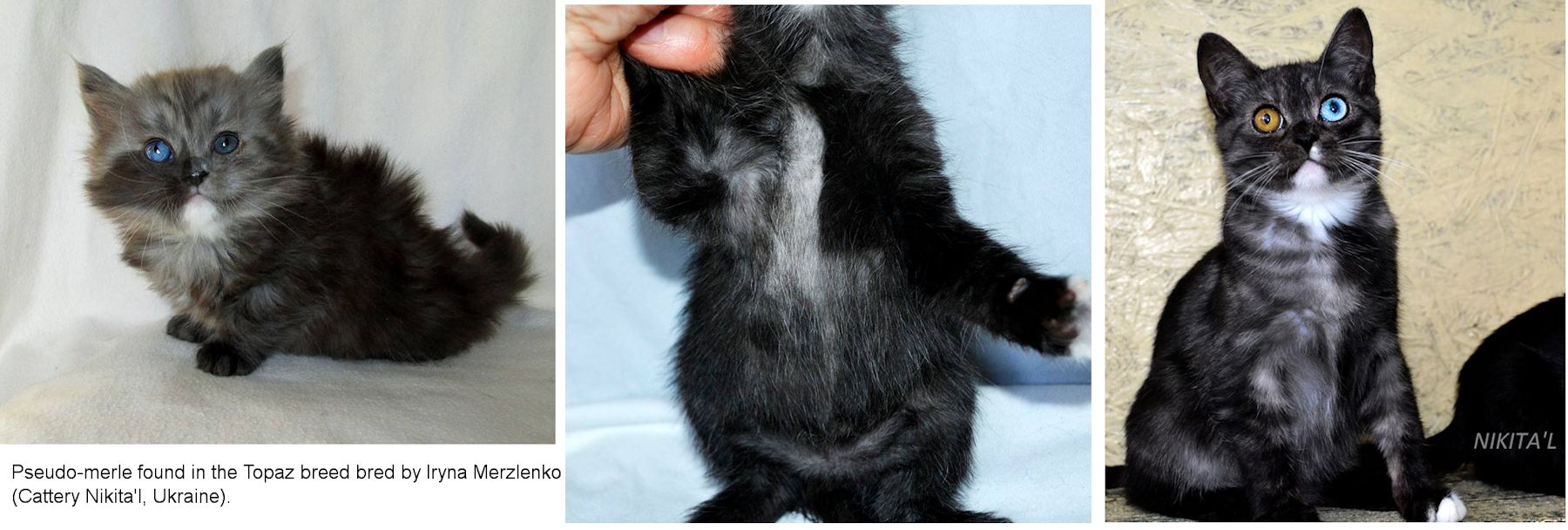
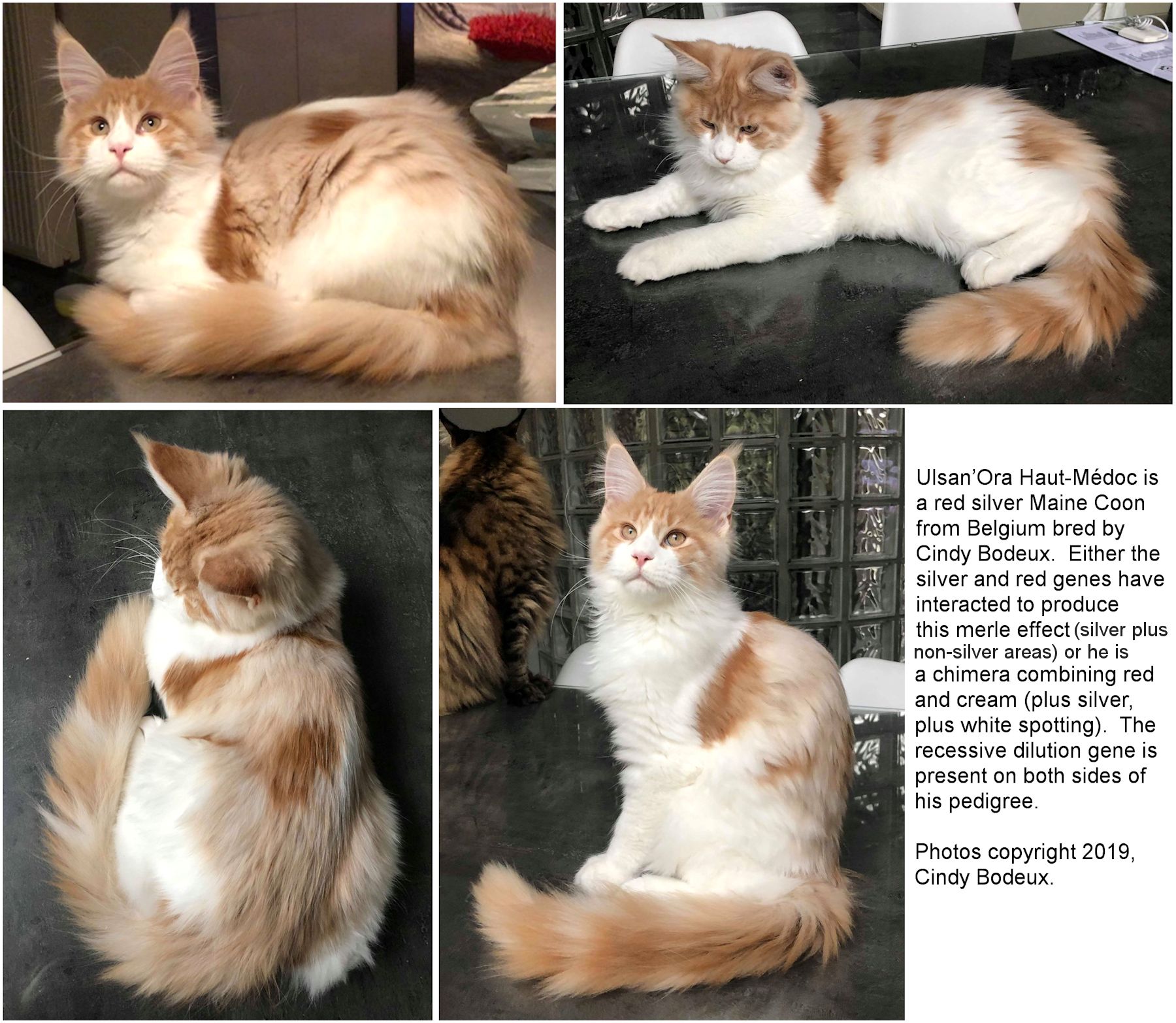
Possible Genetic Factors
The underlying genetics are not yet known. No single mutation has been identified so genetic explanations are based on observation and on "what hasn't been found."
Many silvers seem to have some unsilvered patches, or patches where there is only a small amount of silver at the base of the hair-shaft. On those cats the expression of silver is variable, with a patchwork of light smoke and dark smoke areas. This could be due to polygene influences or even an unstable mutation that reverts during cell division i.e. a somatic mutation. For example, in e/e yellow/white dogs, these should have no black at all but often have scattered black hairs or small black patches.
Could white spotting increase the likelihood of merle effect, for example could it cause the coloured patches to clump and scatter as it does in calico cats? Or is it an optical illusion because the silver undercoat and white patches are hard for the human eye to easily distinguish? In tortie smokes, the red seems to be more affected that the black by the merle effect and this suggests that phaeomelanin deposition is more affected than eumelanin deposition (in the same way that the non-agouti gene does not completely eradicate striping in "self red" cats). Where some red appears lighter and some is darker, perhaps the theorised "chaos" and "confusion" polygenes are involved and disharmonize uniformity of hair ticking and clarity of tabby markings.
Leslie Lyons has theorized that "silver" (white undercoat) may not be an exome mutation and that the visual effect is due to clonal differences in the regulation of pigment production or pigment transport. Others suggest that silver is a bit unstable and tends to revert to wild-type. Clonal differences means a change occurs in a skin cell and when this cell divides and multiplies as the embryo or kitten grows, the daughter cells all inherit the change (the change might be subtle or might be dramatic). A single skin cell that somehow suppresses the silver gene could give rise to a distinct patch on non-silver fur. A single patch may break up and move apart as the skin surface increases, resulting in several coloured patches with the gaps filled in by the base colour.
If silver was an exome mutation, it would already have been found as the feline genome is well studied. The exome is the part of the genome formed by exons. Exons are DNA sequences which, when transcribed, remain within the mature RNA in cells of any type and not just transcribed in specific cells as part of cell specialization. Exomes account for a very small percentage of the genome, but exome mutations can have dramatic effects.
The red-silver dapple pattern also seems more common in combination with white spotting, which suggests a link. Unlike true merle, this pattern in cats is not linked to recessive white. Because pedigree cats with this pattern don't meet exhibition standards, there hasn't been selective breeding for the trait so data is limited.
